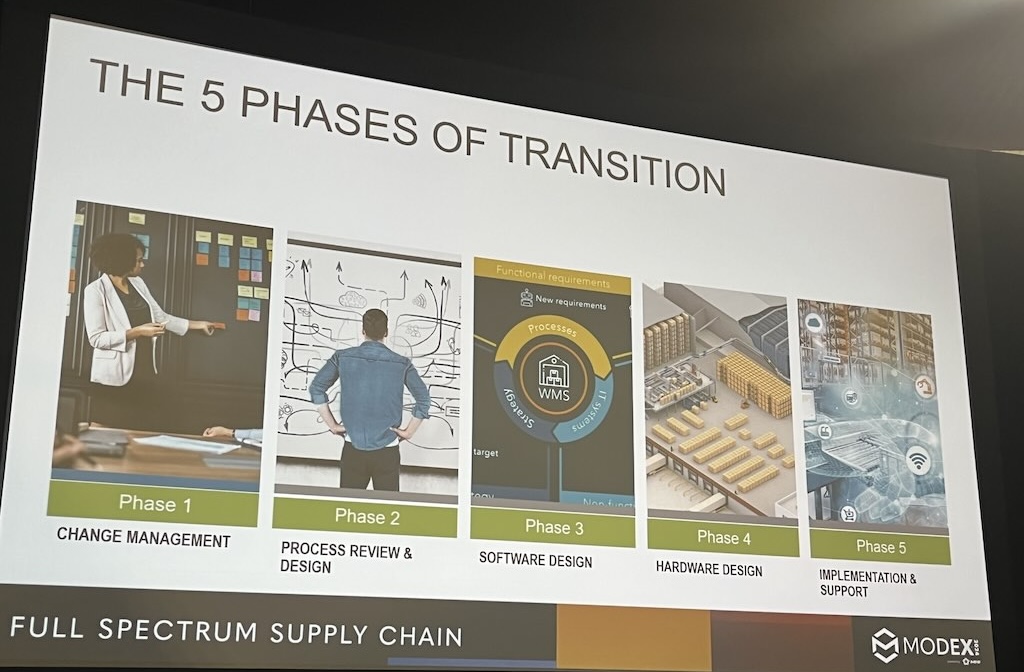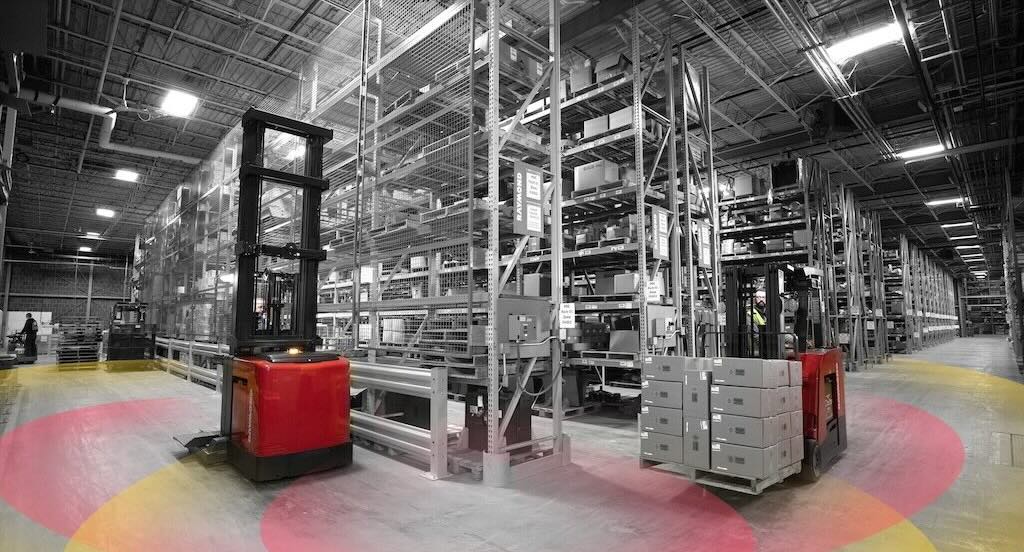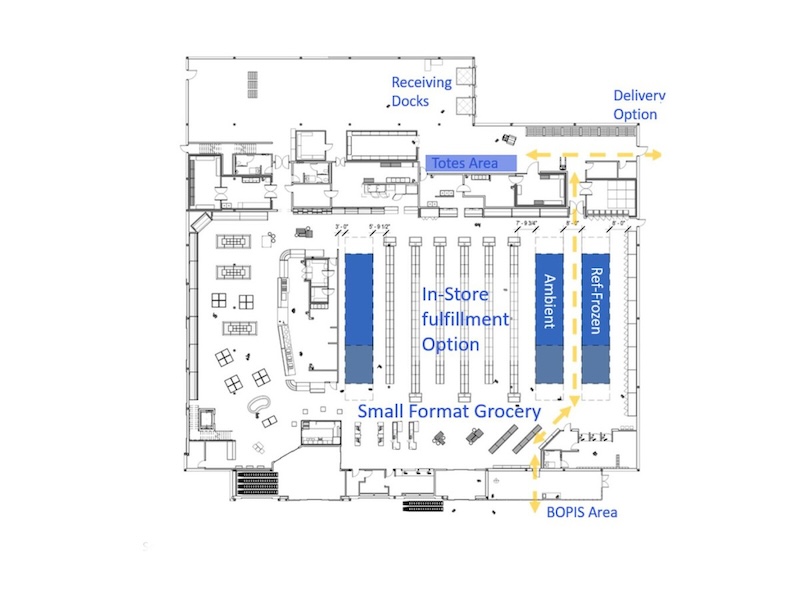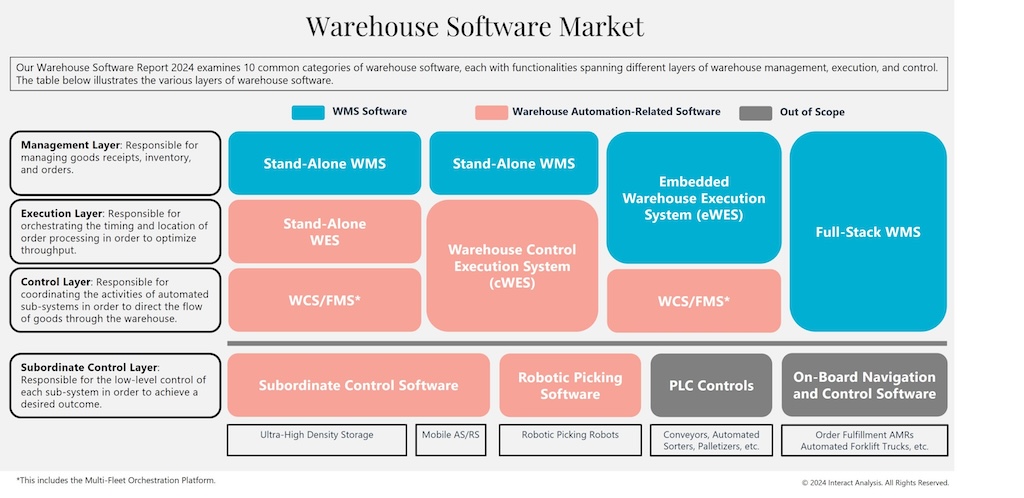A successful warehouse automation plan must have worker buy-in, a thorough plan and strong implementation and support.

Warehouse automation insights
- The warehouse industry has transformed from a dire state 20 years ago to an exciting era driven by Industry 4.0. Automation, fueled by efficiency, drives global growth, especially in the U.S.
- Five current trends, including e-commerce growth and workforce challenges, propel warehouse automation. Upcoming trends like actionable data and robotics-as-a-service promise significant impact, reflecting continuous industry evolution.
- Christoph Buchmann outlines a five-step process for successful automation adoption. Key aspects include change management, robust process review, software design emphasizing IT integration, hardware considerations, and meticulous implementation with worker training for long-term success.
The warehouse industry, according to Christoph Buchmann, sales director for Movu Robotics, was in a terrible state 20 years ago. Today, he said, it’s a very exciting time thanks to the rise of Industry 4.0 and other concepts, which are fueling the growing trend toward automation and data exchange in technology and processes. Automation in particular is driving this growth and offers great potential for manufacturers, Buchmann said during his presentation “Mastering the Path to Automation: A Roadmap for Successful Implementation” at Modex in Atlanta.
Buchmann said, “If you’re not thinking about automation now, you should start.”
Warehouse automation, in particular, has been showing rapid growth worldwide with double-digit growth over the next several years and about half of that value is concentrated in the United States.

Five current and future automation trends
Buchmann said there are five things driving this automation acceleration:
-
Greater efficiency and profitability. It’s more cost-effective than ever to implement automation.
-
Workforce development changes. The worker shortage remains a major challenge for employers.
-
Rising cost of real estate. Rather than build new facilities, companies are trying to make more of what they have.
-
E-commerce growth. Thanks in part to the COVID-19 pandemic forcing changes in how we consume goods while expecting faster turnaround times.
-
Food supply. The food and beverage industry has been using automation even more to match consumer demand and keep costs down.
While these trends are fueling automation’s growth now, Buchmann said there are five trends coming down the line that will have just as big an impact:
-
Actionable data. There is more data than ever and the technology has evolved to where companies can take advantage.
-
Accelerating technology. There have been many advances in automation and the machines in facilities and that is not going to change.
-
Entry-level automation. Buchmann said automation was big and complex 20 years ago. That has changed. Now, automation is more scalable, affordable, accessible and less complicated.
-
Robotics-as-a-service (RaaS). Robotics have grown in manufacturing facilities and small-to-midsize enterprises (SMEs) are turning to the service model to use robotics for their short-term needs rather than making the long-term investment right now.
-
Safety and sustainability. Keeps workers and facilities safer has always been a priority, but now companies are trying to reduce energy costs.

Five steps to transitioning from a manual to automation process
Buchmann said there are many benefits automation can bring such as better efficiency and throughput, higher profitability, better safety and improved accuracy. However, he admitted it isn’t as easy as pushing a button.
Buchmann described a five-step process to turn a manual process into an automated one.
-
Change management
-
Process review and design
-
Software design
-
Hardware design
-
Implementation and support.
The entire transition process, Buchmann said, is a culture change and taking ownership and trusting in your partners and employees is key. Management might approve, he said, but the workforce are the ones who will make this happen. It’s critical the plan be flexible system and plan throughout the entire process.
“The one thing you can expect is the unexpected,” he said.

1. Change management
Putting people, particularly the ones who will be most affected, in a leadership role is critical. Buchmann said people are naturally reluctant to change and they need to be persuaded. He said doing this with a heavy hand and making people feel bad about what they’re doing wrong right off the bat will shut down the conversation before it even begins.
He said the trick is to encourage them by highlighting what they’re doing well and lowering their emotional barriers to be open to the idea.
“You’ll be surprised how quickly they’ll buy in,” Buchmann said. “Workers want to shine.”
By building on those small wins and having them own the new processes and technology, it’ll be easy to get buy-in on the ground floor, which is where it starts.
2. Process review and design
Buchmann said developing a strong plan is critical because it needs to improve open what is already being implemented. He said having the right data is critical to success and any potential automation solution is only as good as the data that goes into the design. Developing an automation plan on bad data or a bad process is only going to lead to a bad automated process, he said.
Gathering the right data requires an in-depth data analysis of the information most important to the operation and creating models that illustrate a full view of the four walls within an operation. It also helps uncover the nuances that make each corporation unique and ensuring a foundation to build success.
Buchmann also said companies should follow these three steps during the process review and design:
-
Assess current operations. Conduct a thorough analysis of warehouse processes, workflows and technologies and consider future needs.
-
Set clear objectives. Define specific goals for warehouse automation and establish key performance indicators (KPIs) and targets to measure the implementation’s success.
-
Educate yourself. Buchmann said people involved in the project should engage with vendors and technology experts as well as evaluate the latest automation technologies to find successful examples.
It’s also important to design objectives that answer key questions such as what the automation transition is designed to achieve. It’s also worth looking at an alternative analysis and determining what is the cost or risk of not automating.
From there, the plan can move forward with a business case that provides a thorough and detailed roadmap for success.
3. Software design
Buchmann said companies should not underestimate the importance of IT integration because the most common reason for failed automation implementations is lack of IT integration.
It’s a little more complicated because warehouse systems have overlapping functions and no fixed function divisions. That means each IT landscape of a warehouse is different. Companies need to find the right set of functions to successfully fulfill operational needs.
Getting the automated interface right and using a digital twin, which is an emulation and virtual replica of a real-life system, also can help as a tool to drive improvements in warehouse productivity and efficiency.
4. Hardware design
There are many types of automation equipment used in warehouse facilities. The four most common are:
-
Mobile robots
-
Automated storage and retrieval systems (AS/RS)
-
Conveyor and sortation systems
-
Stationary and collaborative robots.
Buchmann said there are many operational needs and priorities to consider such as whether the facility should be semi-automated or fully. It’s also worth asking about operational redundancy, adaptability and scalability during the process.
Whatever the case, Buchmann said a thorough analysis is a must because mismatching automation technologies lead to inefficiencies.
5. Implementation and support
Now, Buchmann said, the real physical work starts. The good news is everything is all set because KPIs were already established. The commissioning and implementation process should cover the fundamentals such as testing everything at all levels and doing performance tests beforehand. Worker training is also critical.
It won’t be a perfect process and it shouldn’t be, but the issues will be minor, Buchmann said, as long as people know how to react. “Minor problems can cause downtime if you’re not trained for them,” he said.
People are at the heart of the process and companies that realize and value their workers’ potential and take the time to develop a strong process will come out ahead in the automation race. It’s one they can’t afford to lose as it becomes more than a nice to have like it was 20 years ago. Now, automation is a necessity.



